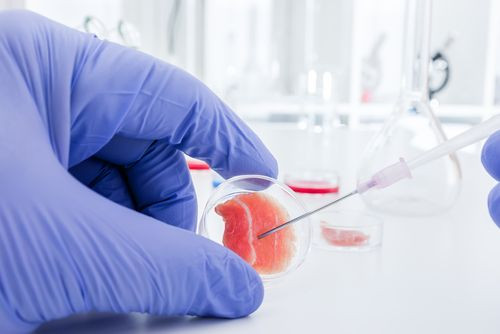Stem Cells Grow Human Stomach For First Time, Offering Great Relief For Many Stomach Problems

A laboratory-grown stomach may be the key to unlocking the secrets of the organ and replacing a faulty one with a brand new model. Researchers from the Cincinnati Children’s Hospital Medical Center, who have been experimenting with stem cells, have created the first 3D human stomach. Their findings appear in the journal Nature.
"Until this study, no one had generated gastric cells from human pluripotent stem cells (hPSCs)," the study’s lead researcher Jim Wells, a scientist at the Developmental Biology and Endocrinology division at Cincinnati Children’s Hospital, said in a press release. It is also the first time researchers have produced a 3D organ, which paves the road for growing other organs, such as lungs and pancreas, Wells added. "In addition, we discovered how to promote formation of three-dimensional gastric tissue with complex architecture and cellular composition."
Stem cells are the seeds planted in petri dishes that grow into a fully functional noses, ears, blood vessels, and now, possibly a brand new stomach. The gardeners of these sprouting organs are hoping to study and treat leading health threats to human life such as stomach cancer or diabetes. Developing 3D human gastric organoids (hGOs) into a mini stomach for the first time is a triumph and is predicted to present opportunities for drug discovery, examining how stomach cancer cells develop and better understanding obesity-related diseases such as diabetes. Wells said it’s more effective to study the stomach with an hGO because it functions inside a mouse model much like a human.
The synthetic stomach will be used to identify what is necessary to form a healthy stomach in humans while figuring out what goes wrong when the stomach doesn’t form correctly. After analyzing how a stomach naturally forms inside a mother’s womb, they placed the hPSCs inside a petri dish and watched it grow over the course of a month into an inch-long stomach. After success, they place H. pylori bacteria tissue into the dish, a major cause of peptic ulcer disease and stomach cancer. Within 24 hours, the bacteria had changed the organ, and the early stages of gastric disease rapidly spread throughout the new mini stomach.
Imagine the future possibilities this one-inch stomach has brought to the nearly 70 million people affected by digestive disease in the United States? According to the National Digestive Diseases Information Clearinghouse, there are 21.7 million visits to the hospital for a digestive disease every year, with an additional quarter-of-a-million deaths causes by specific diseases connected to the digestive system. A new stomach could also change the millions of anorexics and obese people who have stomachs that are trained to release imbalanced levels of hunger hormones. Leptin and ghrelin are hormones secreted from the stomach and are used to decrease or increase appetite. The list of potential applications a new stomach could bring a person with stomach issues is long and also full of hope for those who need other organs currently under development in the laboratory.
"This milestone would not have been possible if it hadn't been for previous studies from many other basic researchers on understanding embryonic organ development," Wells said.
Many great researchers humble themselves before one another, as Isaac Newton famously wrote: “If I have seen further it is by standing on the shoulders of Giants.”
Source: Wells J, McCracken K, and Zavros Y. Nature. 2014.



























